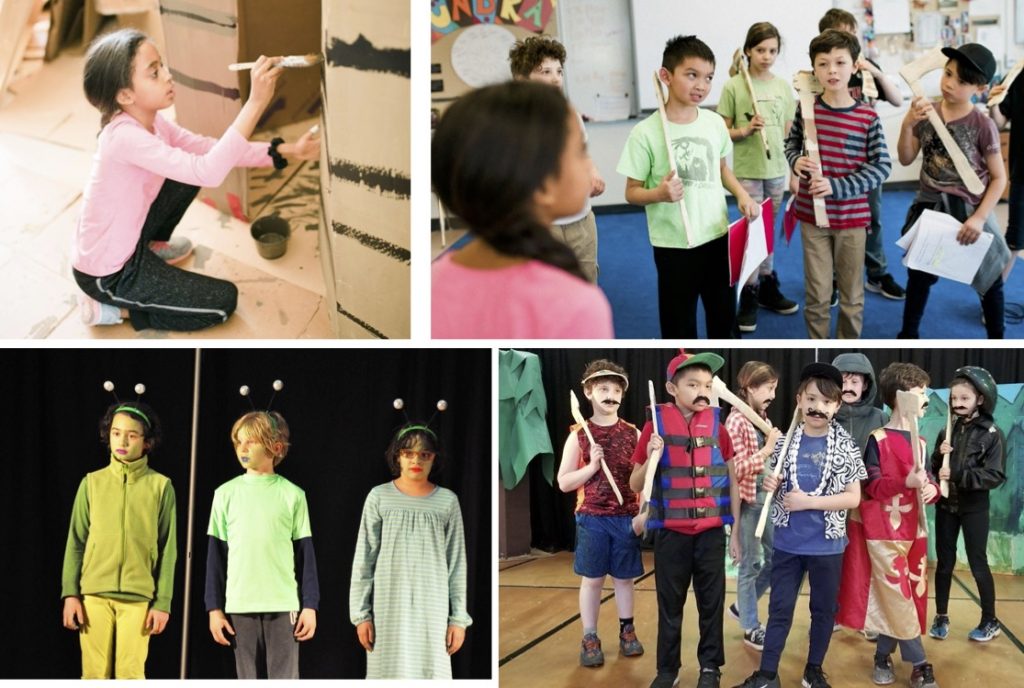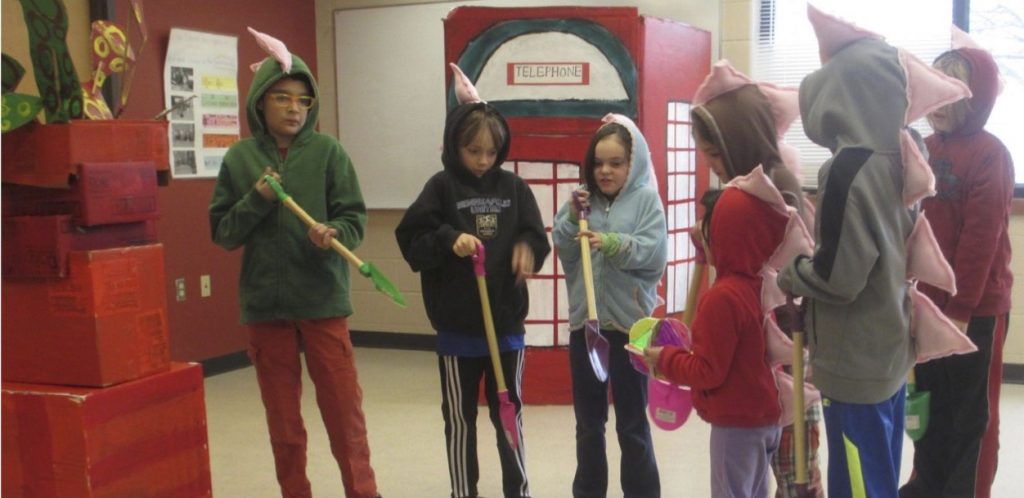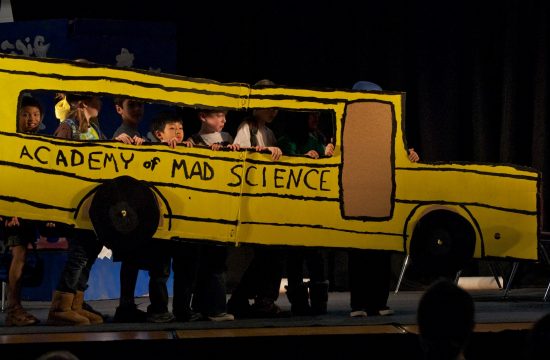At the beginning of May, two eighth graders came to Kak and asked,
“Who were we when we were in 3rd and 4th grade?”
It is a beautiful and important question.
It is a question rooted in connection to the school, to Kak as a teacher, and to the many strong relationships that our students and our teachers build with each other over time.
It is a long standing tradition for Kak and Andrew to partner with students to produce a play that they share with families and the entire student body at FSMN.
Do they create a play just because it is fun? No, certainly that is an important reason and lots of fun does happen, but it isn’t the main reason. Do they create a play because both Kak and Andrew have hidden agendas to become theater directors and this helps build their resumes? No, that isn’t it (at least we don’t think that is it…). Do they create a play each year because it is easy? No, it isn’t easy work, but it is important work.
Creating a play together allows students to apply skills from many, many different disciplines all while navigating relationships with their peers and teachers.
Kak took some time to reflect on the process of creating this year’s play…
This Year’s Play – Yikes It’s March
As we all know, this year was a unique year. In previous years, the Tundra and Bayou started planning the play in November. This year we started in March… a MUCH shorter time to make a play happen. The good news is that the timing worked out. We had just finished a realistic fiction story writing unit in the classroom. The students could apply what they learned about the story writing process and apply those skills to writing the play.
It Starts with Ideas
We started by gathering ideas. In-building and at-home students met in small groups and came up with suggestions for the characters, setting, and plot line. All of the ideas were presented and discussed with the entire group of students. We began to narrow down the ideas to a few that seemed to appeal to most of the students. The emerging theme of using old and new technology to achieve success within the structure of a competitive cooking show was obvious by the second day. Interestingly, the “dragons” and caves and dangerous forests from the first day’s brainstorming disappeared overnight.
Meeting in Groups – Storylines, Dialog and Action
We combined character suggestions and added new ones as we also began to create the storyline, conflict, and resolution of the play. Once we agreed on a very broad outline of the story, students began to meet in groups of four and five with Andrew and myself to actually write the dialog and action of the play. Every student had a chance to add to this process and “own” a piece of the play.
Casting and an Unusual Format
We decided to create an unusual format for the play this year. We divided it into 4 scenes and created characters that would be acted by different students in each scene.
This format allowed us to better include at-home students and to facilitate the recording process and accommodate possibly touchy technology issues.
When it was time to cast the play, we all read through the play together so that students could choose 3-4 characters they would like to play. Andrew and I selected the different scene teams based on the students choices. Everyone seemed happy with the role they were given.
Spork and Knife Costumes
Over the next few days, the students met in “scene groupings” to practice their lines, block their scenes, and to help each other with memorizing their parts.
Students read their scripts several times as their homework as a way of supporting each other in the play. They also designed and created the props. Many of the props were created out of cardboard: “good” cakes, “bad” cakes, full size spork and knife costumes, signs and our beautiful red oven with working doors! The best part of prop making is the chance to paint big items and the opportunity to use the electric scissors.
Aaaannnnndddd… Action!
The students practiced, practiced some more, and then practiced again.
Finally, we were ready to record.
We recorded each scene at least twice. The students hung in there and their practice paid off. After some editing The Star Cooking Show was ready for the premiere. This format also gave us a chance to record a Q&A segment at the end of the play so students could describe the experience and talk about how they felt during the entire process.
The Real Work and A Sense of Accomplishment
The students did a wonderful job throughout the process.
Putting on a play was the end result, but the process was where the learning happened. They learned a great deal about working together and depending upon one another. They learned how to work closely with other students that they may not know well. They learned about timing and comedy and memorization. They learned how to take direction and how to improvise.
Together they created something bigger than any individual alone would be able to create. They learned all of these things while also practicing creative writing, plot structure, acting, building props–all this while remaining engaged and flexible enough to learn and relearn their lines and movements during each rehearsal.
They were so proud of themselves the day after the play. They were able to recognize and voice each other’s significant contributions to this whole process during our Friday compliment circle.
The process of creating, producing and performing a play helps us learn some of the most important skills–how to have creative, fulfilling, caring and thoughtful relationships. How to trust in the give and take of a collaborative experience. How to see ideas become a dramatic reality that is shared and appreciated. How to better understand your own individual voice and to see and hear the voices of others and know that all voices are important and meaningful and that together you can do big things.
“Who were we when we were in 3rd and 4th grade?”





